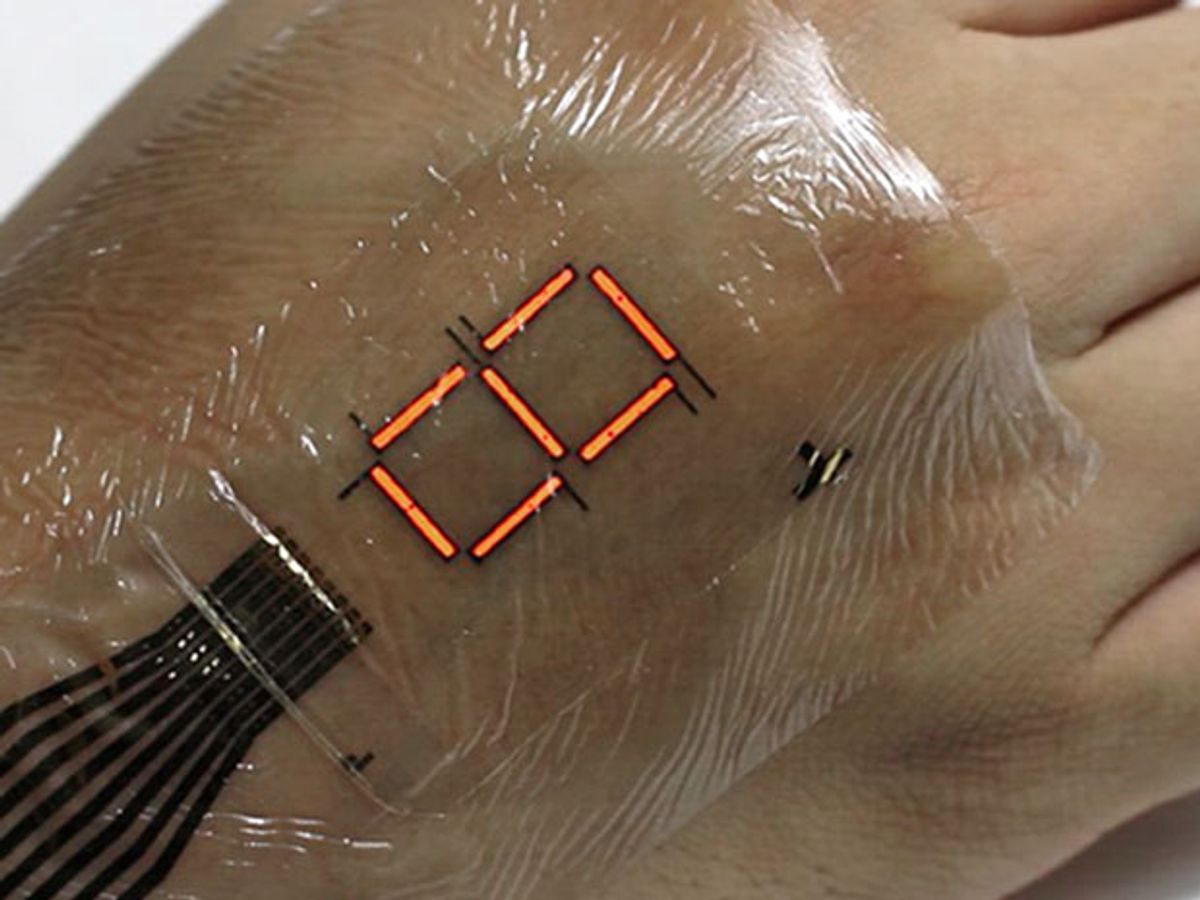It’s clear that smart watches and fitness bands will eventually give way to a far more comfortable, subtle wearable—a temporary tattoo that you barely notice is there because it stretches and bends with your skin. The first generation of such stickers are coming out this year from L’Oreal and others.
Much work has been done on making flexible sensors that can fit unobtrusively in such devices. Last year I tried out some of the sensors coming out of John Rogers’ research group at the University of Illinois that measure blood pressure, analyze sweat, and detect muscle activity.
At this point, the commercial skin-like sensors don’t have their own displays. Instead, they communicate with a smart phone and an app on the phone presents the data. That’s not ideal for, say, runners who want to easily check their pulse rate or diabetics who are monitoring sugar levels with more comfort and accuracy than that possible with a bulky strap-on wearable.
Today, Tomoyuki Yokota and colleagues from the Someya Group at the University of Tokyo announced that they have demonstrated a skin-like display that uses red, green, and blue LEDs made of organic polymers. Sitting on a substrate just a few microns thick, it sticks comfortably onto the skin. In the prototype, Yokota attached the display to an optical sensor that detected pulse and blood oxygenation.

Epidermal electronics that include tiny inorganic LEDs have been demonstrated in the laboratory, but this is the first prototype using organic LEDs in a wearable tattoo. Members of the Someya group have demonstrated flexible organic electronics before, but they didn’t function well in air, said Takao Someya, who wrote about his group’s efforts to develop what he calls bionic skin in Spectrum in 2013. This new version works well in air and in water, he says, thanks to new encapsulation materials that alternate layers of inorganic and organic material. “At present,” he says, “they are not ready to be commercialized, with an estimated lifetime of a few days. However, in the future this could be extended to weeks or months.”
Says Rogers, “Compared to inorganic LEDs, an advantage of organics is that it’s easy to make large area devices. A disadvantage is that they are often less power efficient and more sensitivity to environmental conditions, like air exposure, humidity, and biofluids. My overall feeling is that the two technology approaches are very much complementary.
Someya says these organic displays, combined with ultra-thin sensors, have “the potential to transform our lives. You will no longer have to carry an external deice, you’ll be able to wear it on your skin.” This means more accurate long-term health monitoring, easier access to training data for athletes, and increased privacy, for instance, displaying information inside your palm.
Tekla S. Perry is a senior editor at IEEE Spectrum. Based in Palo Alto, Calif., she's been covering the people, companies, and technology that make Silicon Valley a special place for more than 40 years. An IEEE member, she holds a bachelor's degree in journalism from Michigan State University.



